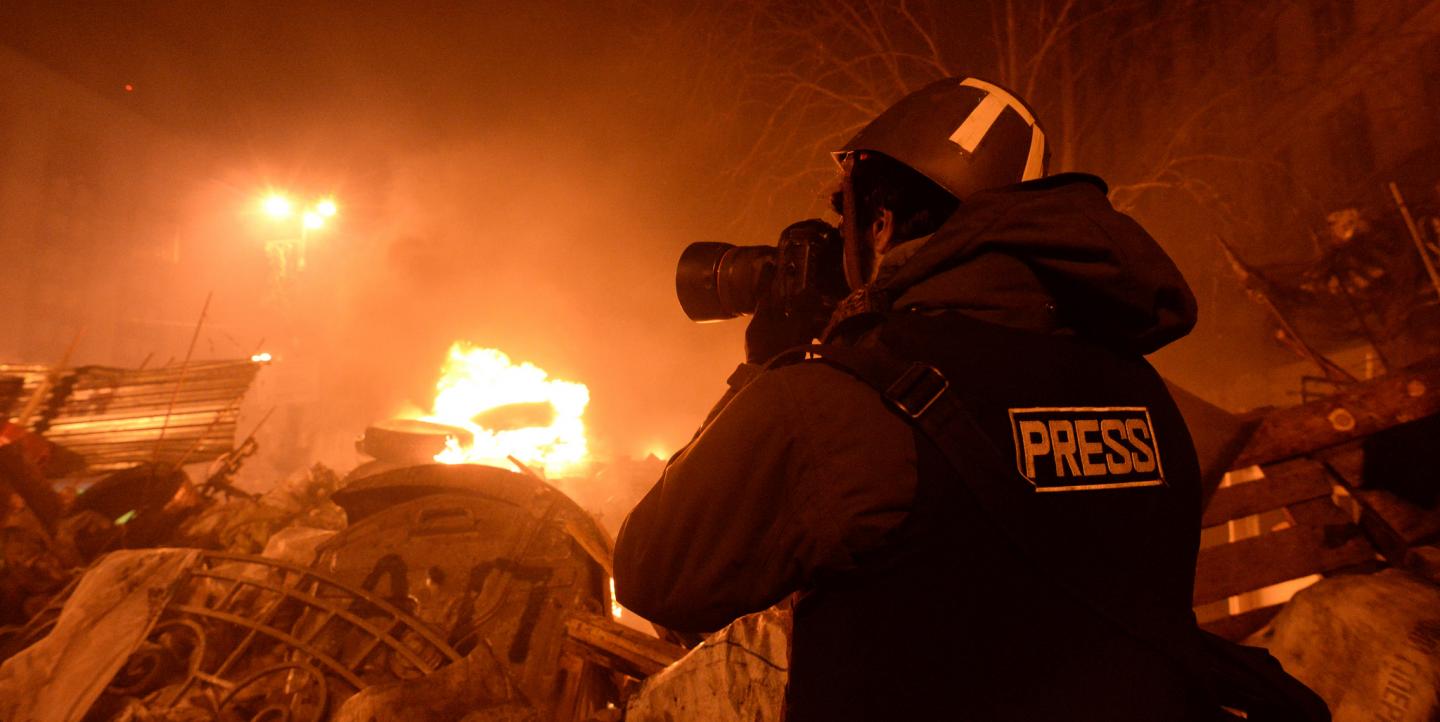Traditionally, journalists have learned what it takes to report from a conflict zone when they’re on the brink of doing it. This typically comes well into one’s career, after years of beat reporting and building up clips and experience.
But an influential university and foundation want to change that. Northwestern University’s Medill School of Journalism and the James W. Foley Legacy Foundation have just released a guide aiming to teach the fundamentals of conflict reporting to a much younger journalism set: college students.
The safety guide was produced with help from Reporters Without Borders and A Culture of Safety Alliance. Ellen Shearer, co-director of the Medill National Security Journalism Initiative and Medill News Service bureau chief, says there was no single “a-ha moment” that spurred the project. But given current challenges facing journalists covering wars, there was increased talk among these industry groups about the need to improve knowledge for reporters entering danger zones.
“Because I’m at Medill, the idea of reaching out to journalism students struck me right away,” Shearer told IJNet. “It came up that maybe we should try to actually hit people earlier in their careers with this really vital information about risk assessment. Providing that knowledge earlier would be a real service.”
The time between idea and execution was short. An initial meeting last September led to a second gathering in the winter, and there was immediately a sense of “let’s get moving,” she said. Reporters Without Borders pitched in with resources, and several Medill graduate students helped pull together reading materials and locate journalists who were comfortable doing videotaped interviews that could become part of the curriculum.
The guide, which was completed in early August 2016, consists of three distinct lessons. The first is based around a viewing of “Jim: The James Foley Story,” an HBO documentary based on the experiences of Foley, a freelance war correspondent who was beheaded in August 2014 and is considered the first American citizen killed by ISIS. Alongside the film, the guide provides background materials on Foley’s case, meant to spur discussion among students about the dangers of conflict reporting.
The second lesson is focused on risk assessment. Shearer said this section includes interviews with two veteran journalists and one relatively new one “offering advice about how they prepare before heading into the field and how they think about risk.”
This is followed by case studies on situations faced by veteran journalists Amanda Mustard, a well-known freelancer, and David Rohde, formerly of The New York Times and now of Reuters.
“Scenarios are given and then students are asked to react. How would they manage the situation? Then the reporters tell what they did,” Shearer explained. “It gives the students a way to roleplay and think through what if it were them.”
According to Shearer, any journalism educator who is teaching at a college level is the target demographic for using these resources in their classroom. Students don’t need to have any reporting experience to reap value.
“I think even if it’s not your intent to become a conflict reporter, it would be useful for you,” Shearer told IJNet. “Should you become an editor, it’s good for you to know what your reporters need to know before they go out in the field. Should you become a different type of reporter, it’s helpful to think about what your colleagues should be thinking about.”
Shearer emphasized that training student journalists in war reporting is essential especially now that in many recent conflicts, it has become more difficult to know who is on what side.
“In Iraq and Afghanistan, there was an American military presence. You could embed. You could find your way to safety. Even if you didn’t embed, you knew the sides,” she explained. “In Libya, you had a populist uprising and the combatants were regular citizens who came together and also didn’t always wear uniforms. ... To me, Libya is the place where it became exponentially more dangerous.”
Foley himself talked about this issue after his first capture as a journalist.
“In most previous conflicts, there was a sense that if you were clearly identified as a journalist, both sides would treat you as a noncombatant,” Shearer added. “What we’re seeing now is journalists being deliberately targeted, either for their ability to generate ransom money or for their ability to, by their capture, generate headlines.”
Given these risks, the guide aims to provide real protocols and systems for journalists to follow on assignment so their chances for safety are increased. The guide can be found at https://www.jamesfoleyfoundation.org/overview-of-curriculum/ and www.nationalsecurityzone.org.
Main image CC-licensed by Flickr via Global Panorama.

